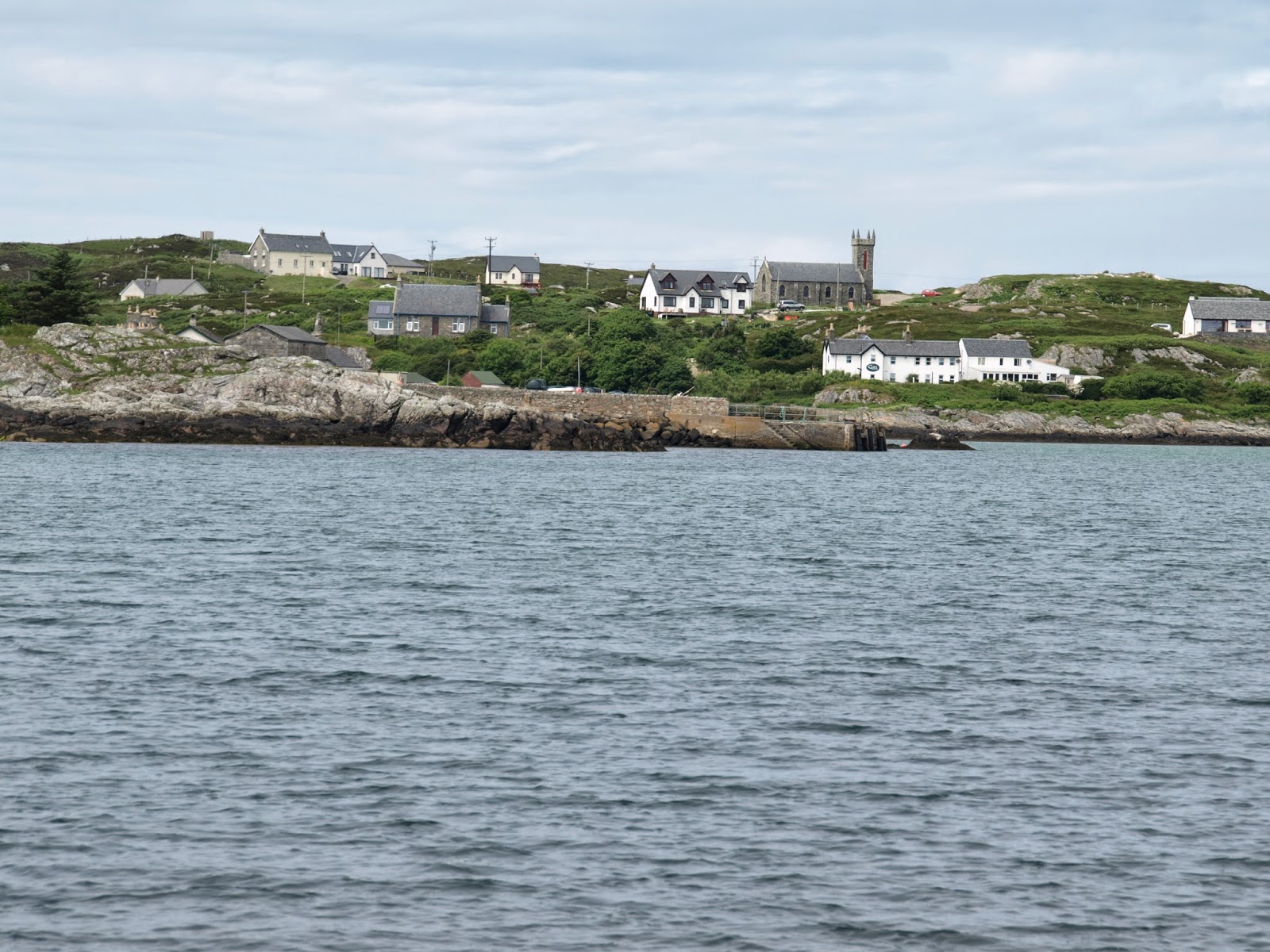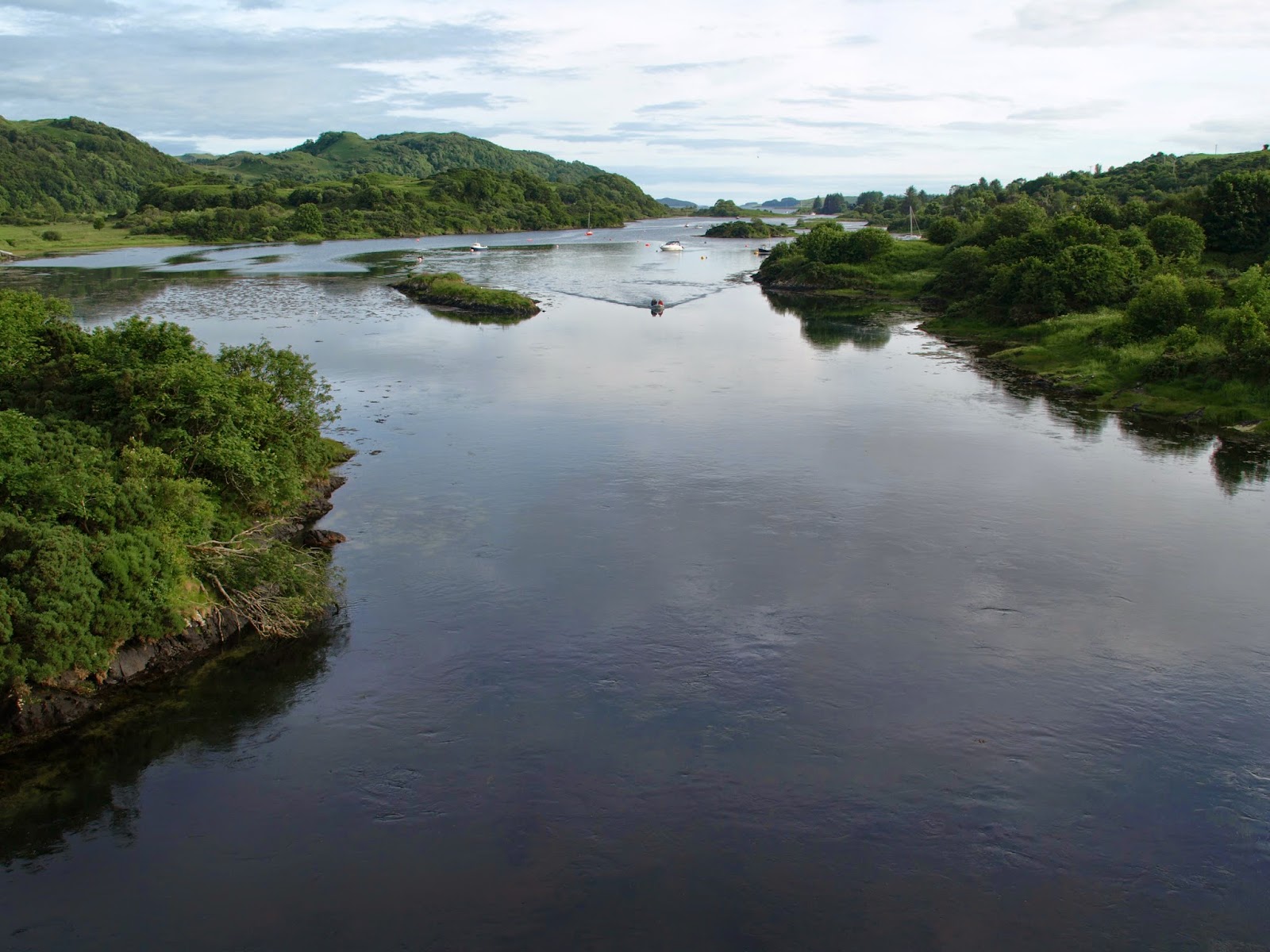We headed out of Dunstaffnage in misty conditions making for Lady Rock off Lismore Island, and on to Loch Aline on the mainland side of the Sound of Mull. The conditions soon deteriorated to a fairly thick fog, and we could hear the fog horn of a ship close by. We were grateful for the reassurance of the chart plotter and AIS system connected to it, which allowed us to 'see' the ships around us together with their course, speed, closest point of approach, and time to that point. Today was also the first time we had used the fog horn built into the new VHF radio in anger. Lady Rock was spotted on our starboard side, and eventually we glimpsed Duart Castle to port, by which time we had moved over to the mainland side of the sound and out of the way of large ship movements. A short time later the mist started to disperse, and we were soon treated to bright, warm sunshine.
The last of the mist dispersing from the mainland side of the sound of Mull.
Looking back the fog bank was all too clear.
As we approached Loch Aline we had to slow a little to stay clear of the Ferry and avoid offlying rocks. By now the village was in bright sunshine as we passed the ferry terminal.
Loch Aline village and ferry terminal.
When we set out we hadn't decided whether to anchor on the South side of the Loch or to investigate the pontoons which had been installed recently. One look at the nice brand new pontoon facilities persuaded us. Loch Aline is famous for the pure Silca sand which is mined from the hillside between the village and the pontoons. Apparently the quarry had had a batch of sand that was too high in Iron to be used commercially and the marina was using this material to build a beach, the white sand and very clear water gave an almost Caribbean appearance; when it is finished it will be very attractive indeed.
The new marina with it's developing Caribbean beach.
The view through our window towards the entrance and the anchorage.
We had two nights here, having a few nice walks with wonderful views down the Loch, and over the Sound of Mull. In the distance to the Southeast we could still see the fog that we had sailed through the previous day.
Great view of Mull from the War Memorial at the top of the village.
Looking Southeast with Ardtornish Castle and yesterdays fog in the distance.
Having stocked up on supplies at the excellent village shop we now started to plan our next moves, and into waters we had not been to before. The next stop was to be Tobermory at the Northwest end of the Sound of Mull, the Northernmost point we had been to by boat before.





















































